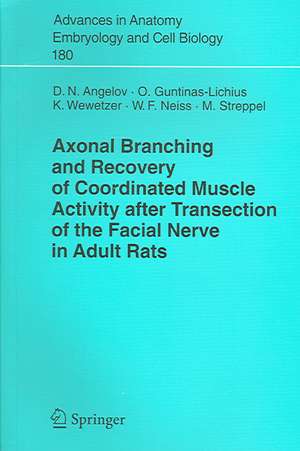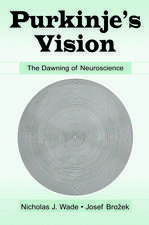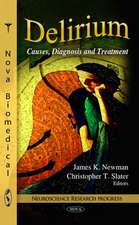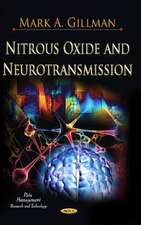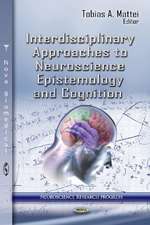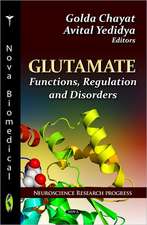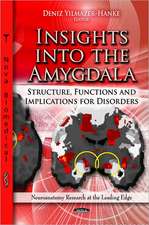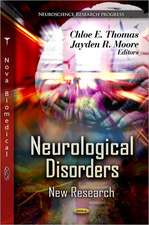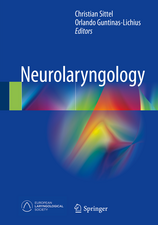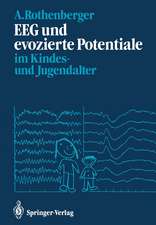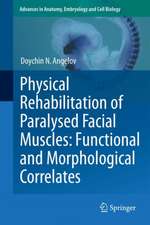Axonal Branching and Recovery of Coordinated Muscle Activity after Transsection of the Facial Nerve in Adult Rats: Advances in Anatomy, Embryology and Cell Biology, cartea 180
Autor Doychin N. Angelov, Orlando Guntinas-Lichius, Konstantin Wewetzer, Wolfram Neiss, Michael Streppelen Limba Engleză Paperback – 27 sep 2005
Din seria Advances in Anatomy, Embryology and Cell Biology
- 5%
 Preț: 1146.33 lei
Preț: 1146.33 lei - 5%
 Preț: 721.19 lei
Preț: 721.19 lei - 15%
 Preț: 637.13 lei
Preț: 637.13 lei -
 Preț: 381.81 lei
Preț: 381.81 lei - 15%
 Preț: 644.95 lei
Preț: 644.95 lei - 5%
 Preț: 1025.16 lei
Preț: 1025.16 lei - 15%
 Preț: 689.97 lei
Preț: 689.97 lei - 15%
 Preț: 577.07 lei
Preț: 577.07 lei - 15%
 Preț: 580.36 lei
Preț: 580.36 lei - 5%
 Preț: 393.51 lei
Preț: 393.51 lei -
 Preț: 408.66 lei
Preț: 408.66 lei -
![Die Schlüpfdrüse der Geburtshelferkröte (Alytes o. obstetricans [LAURENTI]) und anderer Froschlurche](https://i4.books-express.ro/bs/9783662239742/die-schluepfdruese-der-geburtshelferkroete-alytes-o-obstetricans-laurenti-und-anderer-froschlurche.jpg) Preț: 408.27 lei
Preț: 408.27 lei - 5%
 Preț: 1090.61 lei
Preț: 1090.61 lei - 5%
 Preț: 705.11 lei
Preț: 705.11 lei - 5%
 Preț: 706.04 lei
Preț: 706.04 lei - 5%
 Preț: 357.61 lei
Preț: 357.61 lei - 5%
 Preț: 704.59 lei
Preț: 704.59 lei - 5%
 Preț: 705.11 lei
Preț: 705.11 lei - 5%
 Preț: 359.42 lei
Preț: 359.42 lei - 5%
 Preț: 711.52 lei
Preț: 711.52 lei - 15%
 Preț: 635.47 lei
Preț: 635.47 lei - 15%
 Preț: 631.72 lei
Preț: 631.72 lei - 15%
 Preț: 633.35 lei
Preț: 633.35 lei - 15%
 Preț: 632.37 lei
Preț: 632.37 lei - 5%
 Preț: 706.60 lei
Preț: 706.60 lei - 15%
 Preț: 631.07 lei
Preț: 631.07 lei - 5%
 Preț: 707.13 lei
Preț: 707.13 lei - 5%
 Preț: 707.33 lei
Preț: 707.33 lei - 5%
 Preț: 359.60 lei
Preț: 359.60 lei - 5%
 Preț: 707.69 lei
Preț: 707.69 lei - 5%
 Preț: 707.13 lei
Preț: 707.13 lei - 5%
 Preț: 708.06 lei
Preț: 708.06 lei - 5%
 Preț: 706.41 lei
Preț: 706.41 lei - 5%
 Preț: 708.78 lei
Preț: 708.78 lei - 5%
 Preț: 705.68 lei
Preț: 705.68 lei - 5%
 Preț: 705.11 lei
Preț: 705.11 lei - 5%
 Preț: 706.77 lei
Preț: 706.77 lei - 15%
 Preț: 635.15 lei
Preț: 635.15 lei - 15%
 Preț: 631.07 lei
Preț: 631.07 lei - 5%
 Preț: 706.77 lei
Preț: 706.77 lei - 5%
 Preț: 706.04 lei
Preț: 706.04 lei - 5%
 Preț: 710.79 lei
Preț: 710.79 lei - 5%
 Preț: 705.32 lei
Preț: 705.32 lei - 15%
 Preț: 633.19 lei
Preț: 633.19 lei - 15%
 Preț: 629.09 lei
Preț: 629.09 lei - 15%
 Preț: 633.53 lei
Preț: 633.53 lei - 15%
 Preț: 632.70 lei
Preț: 632.70 lei - 15%
 Preț: 633.68 lei
Preț: 633.68 lei - 18%
 Preț: 773.72 lei
Preț: 773.72 lei - 15%
 Preț: 630.43 lei
Preț: 630.43 lei
Preț: 633.02 lei
Preț vechi: 744.73 lei
-15% Nou
Puncte Express: 950
Preț estimativ în valută:
121.13€ • 129.53$ • 100.99£
121.13€ • 129.53$ • 100.99£
Carte tipărită la comandă
Livrare economică 17 aprilie-01 mai
Preluare comenzi: 021 569.72.76
Specificații
ISBN-13: 9783540256540
ISBN-10: 3540256547
Pagini: 144
Ilustrații: X, 132 p. 23 illus., 4 illus. in color.
Dimensiuni: 155 x 235 x 9 mm
Greutate: 0.21 kg
Ediția:2005
Editura: Springer Berlin, Heidelberg
Colecția Springer
Seria Advances in Anatomy, Embryology and Cell Biology
Locul publicării:Berlin, Heidelberg, Germany
ISBN-10: 3540256547
Pagini: 144
Ilustrații: X, 132 p. 23 illus., 4 illus. in color.
Dimensiuni: 155 x 235 x 9 mm
Greutate: 0.21 kg
Ediția:2005
Editura: Springer Berlin, Heidelberg
Colecția Springer
Seria Advances in Anatomy, Embryology and Cell Biology
Locul publicării:Berlin, Heidelberg, Germany
Public țintă
ResearchCuprins
Outline of the General Neurobiological Problem.- The Perikarya Which Support Axonal Regrowth are Hyperexcitable.- Axonal Regrowth is Compromised by Ephaptic Cross-Talk Between the Branches.- Biological Significance of Axonal Branching.- Role of Cytoskeleton Reorganization During Axonal Branching.- The Individual Guidance Cues Promoting Reinnervation of Original Targets are Still Unknown.- Conclusion.- Outline of the Clinical Problem.- Questions Still Open.- Methodological Approach.- Materials and Methods.- First Set of Experiments: Attempts to Reduce Collateral Axonal Branching by Alterations of the Trigeminal Input to the Facial Perikarya.- Second Set of Experiments: Attempts to Reduce Collateral Axonal Branching at the Lesion Site.- Results.- First Set of Experiments: Influence of the Altered Afferent Input to Axotomized Facial Perikarya on the Quality of Reinnervation.- Second set of Experiments: Attempts to Reduce Collateral Axonal Branching at the Lesion Site.- Discussion.- The Combined Approach to Evaluate the Quality of Peripheral Nerve Regeneration.- Sensory-Motor Integrity as A Factor for Motor Regeneration.- Collateral Branching Versus Terminal Sprouting of Axons.- Prospects for the Future.- References.- Subject index.
Caracteristici
Includes supplementary material: sn.pub/extras
